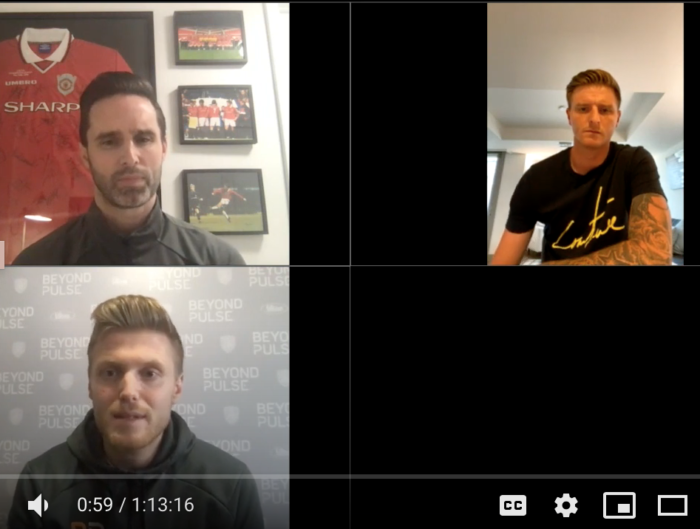Enhancing performance while minimizing injury risk are products of training that are critical to the development of an individual and team. Developing a training plan that considers the balance between the physical outputs, and responses to those outputs, is an effective way to achieve these goals. If done mindfully, a coach can maximize the technical, tactical, and physical demands that a match requires.
Soccer is an intermittent sport that requires brief bouts of intense actions and longer periods of lower intensity actions (Rampinini et al., 2007). An example of an intense action would be a sprint or aggressive change of direction, while an example of a lower intensity action would be the jogging or walking between these intense actions. If we define enhanced performance in soccer as an increase in the number of intense actions performed in match, then the question becomes:
“How do we best set up our training sessions to improve not only the quantity but quality of these intense actions?”
Fatigue and Performance:
“Operating under fatigue costs the body more to do the same action”
Let’s illustrate this with an example:
Player A
- Max running speed=20mph
- Bank Account: $100.00
- Current Status: Fatigued
Player B
- Max running speed=20mph
- Bank Account: $100.00
- Current Status: Fresh
Player A performs an intense action (example: sprinting). It costs the athlete $20.00.
Player B performs the same intense action: it costs the athlete $10.00
Which player will be able to perform more intense actions in a match? If you said player B, I would agree. Player B is fresh and has more in the bank to pay out to perform the intense action that is sprinting. In addition, improvements in the quality (for example from 20mph to 21mph) of this sprint is only possible for player B as fatigue is the enemy to high intensity activity. It is impossible to improve upon the quality of the sprint when under fatigue.
Notice the above statement reflects on the quality of the action rather than the quantity of the action. The quantity (or the number of intense actions performed) improves when the capacity to resist the onset of fatigue is increased. How is this trained? This is when training under fatigue becomes important. In order to extend the capacities to resist fatigue you must increase your body’s ability to tolerate fatigue. The only way to do this is to operate in conditions when the individual isn’t fully recovered from the previous intense action. When effectively implemented, athletes improve ability to recover from intense actions; allowing for great ability to perform more (aka quantity) intense actions. Adding this type of training into a session at the right time in the week can both enhance performance and minimize injury risk.
Monitoring Fatigue in Your Players:
The implementation of data tracking in sport allows all of us to make informed decision based on a combination of subjective and objective data. If we appreciate the current status of our players, then we can begin to better understand the “cost (remember our analogy above)” the overall training session may elicit. Here are a few recommendations to help identify players who may be under fatigue.
Comparing External and Internal Loads:
External load is the actual work the athlete performed. Distance covered, sprints performed, and total player load/active participation are all examples of external load metrics. They represent the actual “work” that was performed by the athlete.
Internal load is the “cost” or response to the external load. There are two way to access internal load:
- Subjectively via wellness questionnaires and training session ratings.
- Objective Heart rate responses
Let’s look at another example:
Player A
- Distance: 5km
- Sprints: 100m
- Heart Rate Response: 50 minutes over 80% max heart rate
Session Rating: 8/10 (Very, Very Hard)
Player B
- Distance: 5km
- Sprint: 100m
- Heart Rate Responses: 20 minutes over 80% max heart rate
Session Rating: 5/10 (somewhat hard)
Team Average
- Distance: 5km
- Sprint: 100m
- Heart Rate Response: 25 minutes over 80% max heart rate
Session Rating: 6/10 (Hard)
Even though both players performed the same work (external load) the “cost” (internal load) was different. Referencing our bank analogy, when the internal load response is higher that means the “cost” to that athlete is more. This cost could be the result of underlying fatigue and/or decrease fitness levels. Regardless of the cause it allows for a meaningful conversation to occur between the coach and their athlete. Equally as important it allows for action to be taken when planning the next training session to ensure positive training adaptation in the form of enhanced performance while minimizing injury risk.

 FRA
FRA































